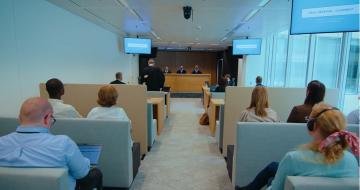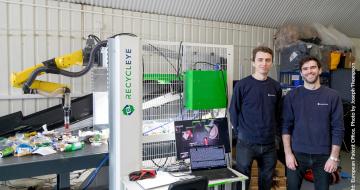Table of Contents
What is a European patent?
If you want to protect your invention in multiple European countries, it is more advantageous to request a European patent than to request a patent in each of these countries. With one application and one procedure, it is possible to obtain a patent that is valid in several countries of the currently 38 member states of the European Patent Convention .
The European Patent Convention was revised in 2000. It is therefore important to check which version of the Convention is applicable, on the basis of the date on which patent application was filed and the date on which the patent was granted, and to take into account of the application over time of of the legal provision concerned. Three periods can be distinguished:
- European patents granted before 13 December 2007 and patent applications filed before this date, as well as European patents granted on the basis of those applications, fall under the 1973 version of the European Patent Convention (as implemented by Belgian law of 8 July 1977).
- European patent applications that have been submitted as from 13 December 2007 and the European patents which have been granted on the basis of those applications, fall under the new version of the European Patent Convention (as implemented by the Belgian law of 21 April 2007).
- As from 22 September 2014, a third legislative instrument has become effective in Belgium, incorporating the latest version of the European Patent Convention. This is the Book XI of the Code of Economic Law, of which the provisions on the European patent only apply to European patent applications filed since 22 September 2014, as well as to the European patents granted on the basis of those applications.
Although the grant procedure of a European patent is more complicated and lasts longer than the Belgian procedure, because of the required examination on the patentability conditions, this procedure has the advantage to have a patent with more guarantees as to its validity.
Those who seek a European patent generally designate all of the member countries of the European Patent Convention. However, during the procedure, you can remove countries from your application and limit the geographical coverage of the effects of the patent to one or more countries.
A European patent granted for a range of countries provides the same rights in the countries concerned as a national patent. The European patent consists in fact of a bundle of national protection titles. The patent is subject to national rules regarding:
- scope of protection;
- transfer and license;
- implementation of rights, etc.
A European patent can thus have a different scope according to the country in which it is applied.
The European procedure consists of five steps:
- the filing of the patent request;
- the formal examination of the patent application and the search for prior art. The full application and the search report are then published;
- if the applicant would like to continue with the procedure, the substantive conditions of the patent are examined. Examiners verify whether the patentability conditions are met, i.e. novelty, inventive character, industrial application and legality of the invention. The patent is then granted and published, or the application is rejected;
- after the grant, a third party may file an opposition;
- finally, the decision to grant or to reject the patent may be subject to appeal before the European Patent Office.
For more information, see the website of the European Patent Office (EPO).
Where and how to file a European Patent Application?
You - file an application form to the European Patent Office (EPO). However, there is one exception for which the application form must be filed to the Belgian Intellectual Property Office in Brussels.
This exception applies when you meet the following two conditions:
- you are Belgian or your domicile or registered office is in Belgium; and
- your application may be relevant to the defence of Belgian territory or State security.
It is the responsibility of the applicant of the European patent to check whether his application may actually be relevant to the defence of Belgian territory or to State security. You can file the application to the Intellectual Property Office by postal mail, by fax or in person.
Do you wish to be represented?
Content of the European patent application
It is important to fill out the application form correctly. Only when certain data has been provided, a filing date can be granted. This date is decisive for the assessment of novelty, and therefore to judge the priority between different possible patent applications for the same application. Both Belgian and European patents are governed by the first-to-file principle, which means that the first applicant for a patent will be the patent owner, even if he is not the first to have conceived the invention in question.
The patent application must contain the following elements:
- a request for the grant of a European patent;
- the applicant's identification details;
- a description of the invention:
The invention must be described in the patent application in a sufficiently clear and complete manner, so that a specialist in the same technical field can carry out the invention;
- one or more "claims";
These claims describe the object for which the patent protection is requested. Although the description and possible drawings may help to interpret the claims, the claims alone will determine the scope of the granted patent.If you draft these claims too narrowly, the patent granted will be restrictive and you will not be able to remedy this later. Poorly drafted claims can therefore lead to a patent offering very limited protection. It is thereforestrongly recommended that you seek the assistance from a patent attorney; - possible drawings to which the description or the claims refer ;
These drawings may be indispensable for understanding the invention. - an abstract (summary)
It will be used to communicate the patent information to third parties; - if applicable, the power of attorney given to a representative (accredited patent attorney, lawyer, employee, etc.).
Forms for the patent application
A certain amount of the data mentioned above may be provided at a later date. However, an indication that a European patent is being applied for, the applicant’s identifying data and the description of the invention or a reference to an earlier filed application are in any case required in order for a filing date to be attributed. This date is decisive for the assessment of novelty, and thus for judging the priority between different possible patent applications for the same invention.
Language of patent application
You can file a European patent application may in any language, but a translation into German, English or French must be provided within two months of the filing of the application. The claims must then be translated in German, English and French before final publication. In addition, European patents can be consulted free of charge in all official languages of the Members States of the European Patent Organisation , by using the automatic translation software provided by the European Patent Office. The translation is provided for information purposes only and has no legal value.
Please note: this applies only to the filing of the European patent application as such. The correspondence with the Intellectual Property Office within the framework of European patent application does not happen regardless which language is used, but must follow the rules on the use of languages in administrative matters.
Fees
To obtain and maintain a European patent, you are liable for a number of fees. For example, a filing fee must be paid within one month of filing the request.
More information on patent fees.
Formal examination, search for prior art and publication of the request
Formal examination
To obtain a filing date, a certain number of formal requirements must be met. The filing division of the European Patent Office checks whether the following data have been provided:
- the indication that a European patent is being applied,
- the applicant's identification details, and
- a description of the invention or a reference to a previously filed application.
Only if these conditions are met will a filing date be attributed to the patent application.
Unless a priority right is invoked, this date is required to determine the novelty of the invention as well as to determine the order of filed applications. The 20-year term of protection of the patent is also calculated from this filing date. Issuance of a filing date does not ensure final issuance of a patent.
Next, the filing division checks whether:
- the required fees have been paid;
- the other formalities have been carried out.
If applicable, a deadlineis granted to give the applicant time to complete the file.
The patent application is deemed complete when the applicant has remedied the irregularities in his file within the granted timeframe.
Search for prior art
In parallel with the formal examination, the search division of the EPO carry out a search for prior art and sends it to the patent applicant, together with a written and non-binding opinion on the patentability conditions.
Publication of the patent application
As soon as possible after the 18 months period as from the filing date has expired, or, if applicable, as from the priority date, the complete patent application and the search report are published in the EPO Patent Register. The file is now available to the public.
Substantive examination, granting of the patent and publication
Substantive examination
After the publication of the search report, the applicant has six months to request a substantive examination, or an examination of the patentability conditions of the invention. If the applicant does not do so, his patent application is considered as withdrawn.
The examination division of the EPO then checks whether the patentability conditions are met.
The following are then controlled:
- the novelty;
- the inventive character
- the industrial applicability;
- legality of the invention;
- as well as the possible application of an exclusion from the scope of patent or the absence of a sufficiently clear and complete description.
Grant of the patent and publication
If all conditions are met, fees are paid and translations provided, the EPO grants the patent. The European patent enters into effect on the date of its mention in the EPO Patent Bulletin. The patent is only valid as from this date, even if the applicant has provisional protection before this date (see Scope of protection).
The patent is published in its entirety in the EPO Patent Register and is accessible online.
Opposition
Within 9 months after the publication of the mention of the grant in the European Patent Bulletin, any interested person may file an opposition against the granted European patent.
This opposition must be motivated by the grounds determined by law, namely:
- when the patent does not meet the patentability conditions,
- when the description of the invention is not sufficient, or
- when the granted patent is broader than the subject matter of the original application.
The EPO opposition division will examine the reasons for the opposition and will decide:
- to revoke the patent,
- to maintain it, or
- to modify it.
After the aforementioned 9-months period, an opposition against the European patent can only be filed with the competent national court.
Appeal
Decisions of the the filing, search, examination or opposition divisions of the EPO may be appealed to the EPO Board of Appeal within two months of their receipt.
Decision of the EPO Board of Appeal may also be appealed to the Enlarged Board of Appeal, which ensures that all European Patent Convention rules are applied uniformly.
Effect in Belgium
European patents that designate Belgium, have automatic effect in this country. These patents are not subject to conditions of validation, under the condition that they were granted, modified or limited after 1st January 2017. As long as the annual fees are paid in due time, the patent will not lapse.
Since there are no conditions for the validation, a European patent owner does not have to appoint a representative in order to receive the automatic effect.
For the rest, representation before the Belgian Intellectual Property Office in respect of European patents is subject to the same rules as for national patents. Consequently, you can always voluntarily appoint professional representative and notify the Belgian Intellectual Property Office of this appointment. In some cases, you are even obligated to do so. Notifications can be filed via eOLF, by postal mail or by fax.
If you want to inform the Belgian Intellectual Property Office of the name of a professional representative for several European patents at the same time and for which no such representative has yet been registered with the Office, please use the following form:
French “Notification form for the appointment of a European patent representative” (DOCX, 35.35 KB)
Dutch “Notification form for the appointment of a European patent representative” (DOCX, 32.62 KB).
The completed form should be sent to the Belgian Intellectual Property Office and can only be filed by postal mail or by fax. It cannot be filed via eOLF.
If you wish to report the appointment of a professional representative for more than ten European patents at the same time, please submit additional forms depending on the number of European patents. If you wish to report the appointment of a professional representative for more than ten European patents at the same time, please submit additional forms depending on the number of European patents.


